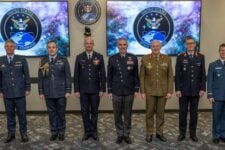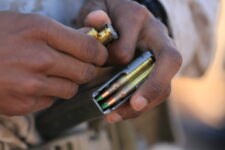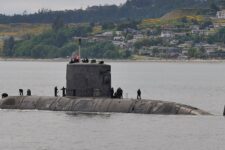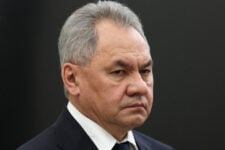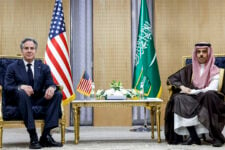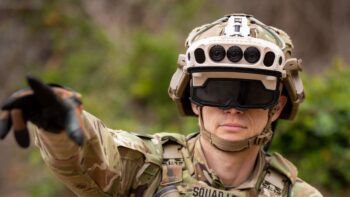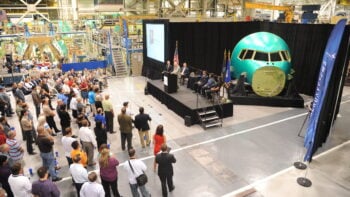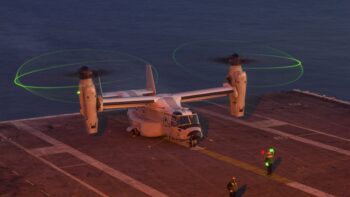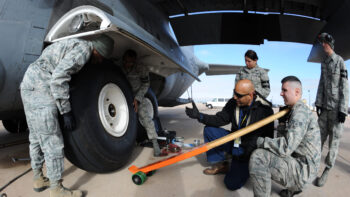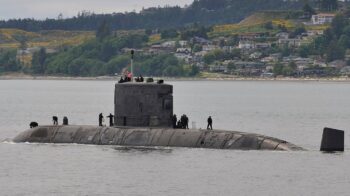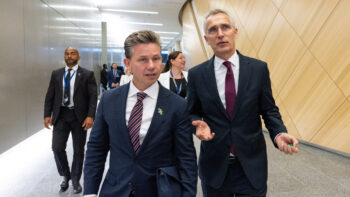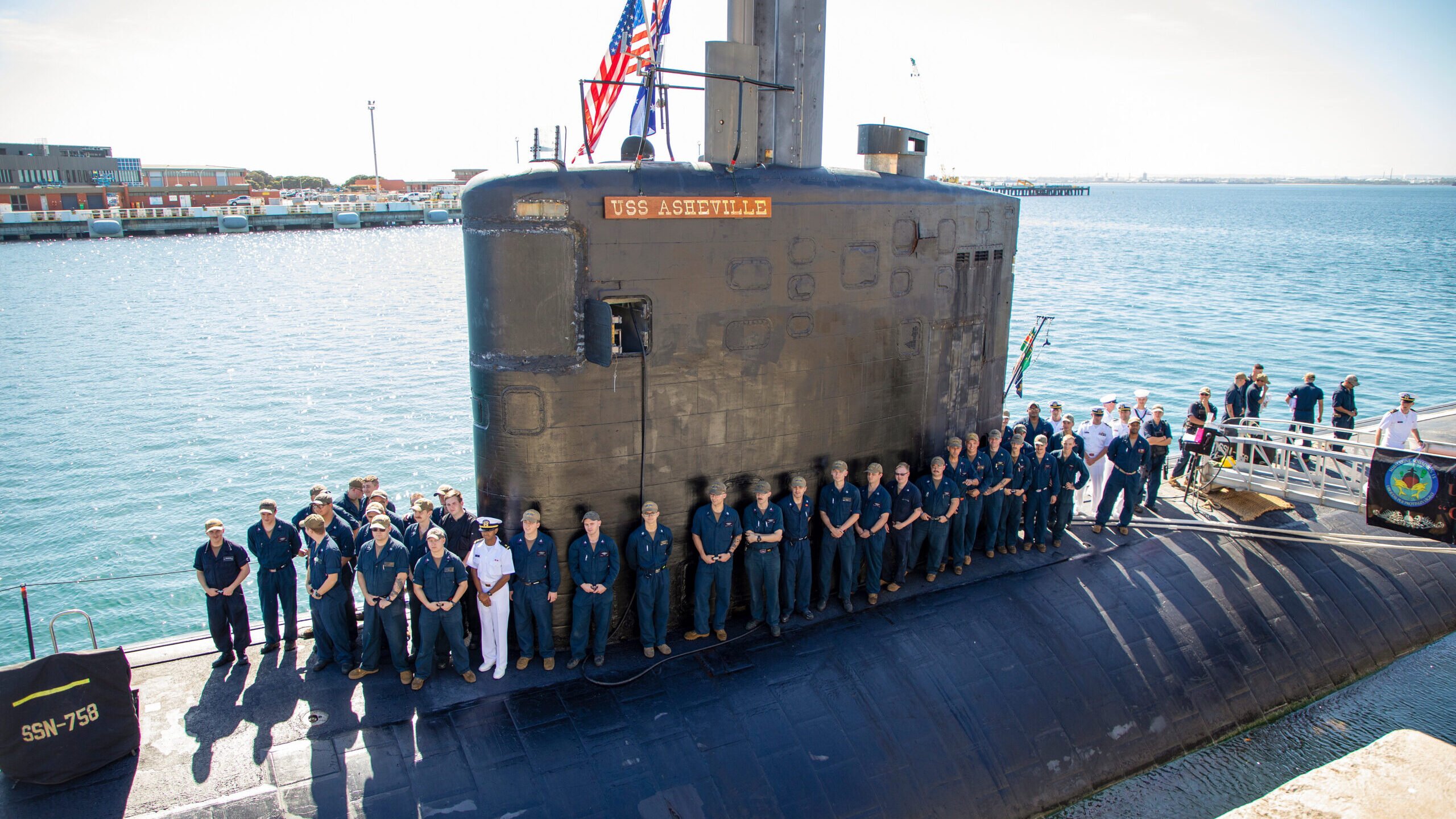
The crew of the USS Asheville assemble on the casing of the submarine during a visit to HMAS Stirling in Rockingham, Western Australia. (Australian government)
Updated 8:50 PM et to reflect new comments from the Australian PM that were released after the original publication of this story.
SEA AIR SPACE 2024 — Officials from the United States, United Kingdom and Australia today seemed to express confidence that new members could be added to the AUKUS agreement without becoming a distraction from the already-underway submarine work — only for the Australian prime minister to tempter expectations.
This morning, the three AUKUS defense secretaries — US Defense Secretary Lloyd Austin, British Secretary of State for Defence Grant Shapps and Australian Defence Minister Richard Marles — released a statement that the nations are “considering cooperation with Japan on AUKUS Pillar II advanced capability projects.”
While largely expected, the statement was the first official confirmation that Japan is in line to potentially join Pillar II, which covers a collection of new defense technologies, as opposed to the nuclear-submarine portion of the security agreement.
After the fact, Shapps expanded that comment, tweeting out that “we’ve announced we’re scoping like-minded nations, including Japan, to join some of our AUKUS pillar two work streams” — a sign that further team-ups are on the AUKUS leaders’ minds. Although not mentioned in the minister’s statement, New Zealand has been open that it is having conversations about joining Pillar II as well.
However, hours later, Australia’s Prime Minister Anthony Albanese clarified that to his mind, no other countries will be invited into the AUKUS membership.
“What is proposed is to look at ‘pillar two’ of AUKUS and look at a project by project, whether there would be engagement and Japan is a natural candidate for that occur,” Albanese said during a press conference in Canberra, according to Reuters. “What is not proposed is to expand the membership of AUKUS.”
In other words, while Japan or others may align on Pillar II, Canberra considers actual “membership” in AUKUS to be off the table.
The addition of more nations to AUKUS isn’t without controversy, as critics are concerned it could distract from getting the new AUKUS-class submarines up and running. For instance, Andrew Hastie, the Australian shadow defense minister, told Breaking Defense in a recent interview that “AUKUS’ focus should remain with the three countries already involved.”
Speaking hours later at the Navy League’s Sea Air Space conference, three key representatives from the AUKUS nations pushed back on such criticism.
RELATED: Japan PM’s Washington trip: Bilateral focus but ‘groundbreaking’ trilateral goals
“We’ve been always open to Pillar II, open to opportunities to partner with other countries, and that’s obviously what today’s announcement is about, is cooperating on a project by project basis where it makes sense,” said Pat Conroy, Australia’s minister for defense industry. “I think all three countries are really excited for both Pillar I and Pillar II. And I think that we need to be able to do both at the same time.”
Vice Adm. Robert Gaucher, commander of US Naval submarine forces, noted: “We’re gonna execute most of the things in Pillar II with or without AUKUS,” in that the technologies being considered are the kinds of systems all three nations are interested in even outside the trilateral agreement.
“Although I’m not privy to all the policy decisions of bringing Japan in or not, I would say we already share a ton of technology with Japan. They’re a great partner on the Pacific,” Gaucher added. So I think the more partners, particularly in the Indo Pacific region that we can bring together on these capabilities — like unmanned, for example. There’s tens of countries that operate unmanned, so why wouldn’t we want to partner? So I think there’s a lot of easy ways to coordinate on a Pillar II opportunity that are mutually beneficial well beyond AUKUS.”
Pillar I “doesn’t slow down because this sort of agreement made today about other complementary [partners],” said Vice Adm. Martin Connell, the UK’s Second Sea Lord. “There are going to be a list of likely nations who are going to be invited to work with us on some important capabilities. As Rob said, we work with those nations. So I don’t see it slowing down.”
To Goucher’s point, the three AUKUS nations are already working on Pillar II tech. Among the priorities. Conroy said he was “particularly excited” about electronic warfare, while all three highlighted undersea capabilities as another priority.
Technology about the seabed “rapidly gets into classified” areas, stated Connell, but he noted that the trio “went from concept to a trial on Australian and UK ships within six months,” a sign that the work is already well underway.
